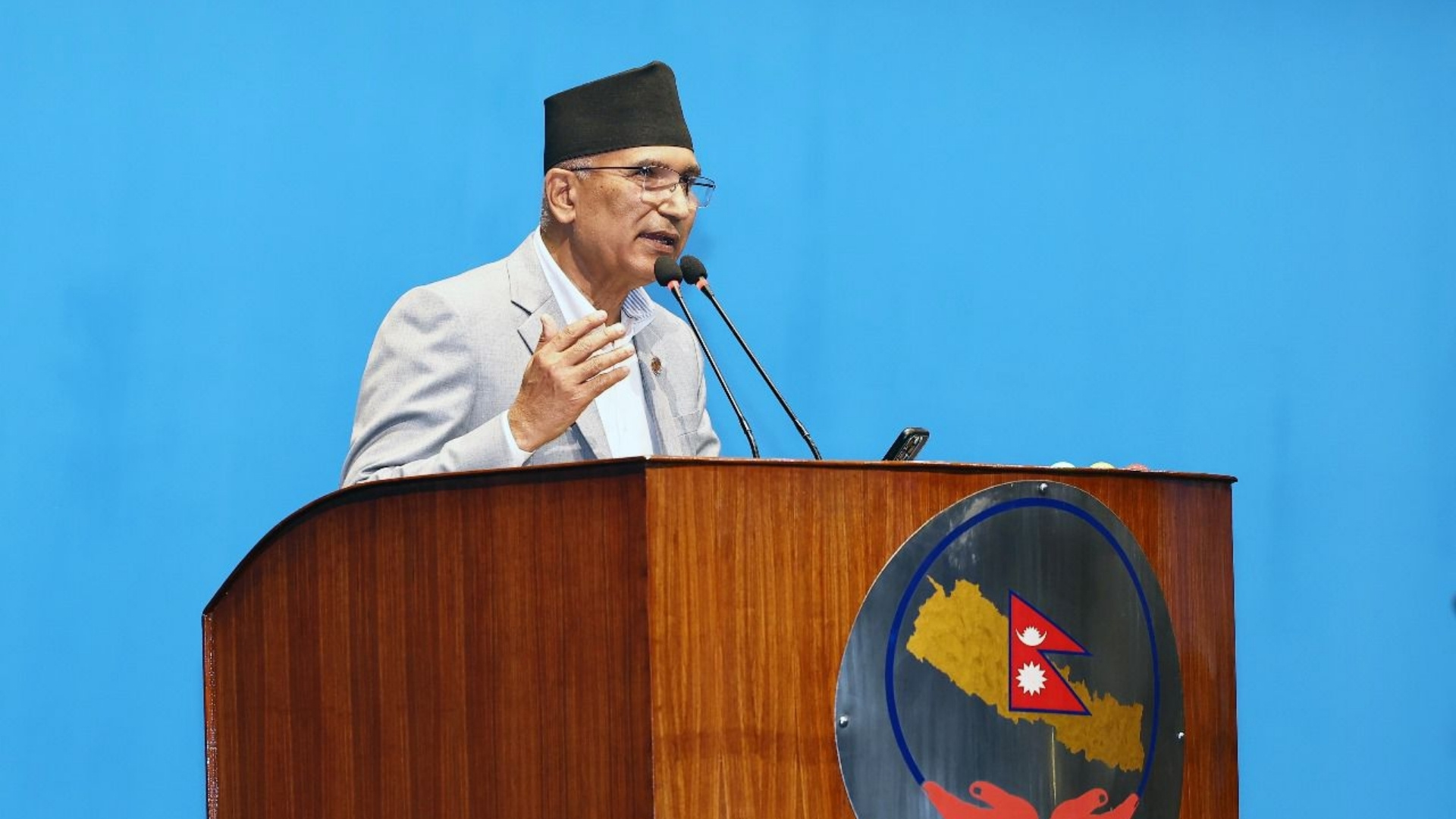
The Ministry of Finance (MoF) has slashed its current budget by NRs 167.5 billion — 9% of the initial allocation, in its mid-term budget review, citing an inability to reach expenditure and income targets. The initial budget of NRs 1.86 trillion has now been reduced to NRs 1.69 trillion.
The reduction came amid failure to meet targeted expenditure and revenue collection, said Finance Minister Bishnu Prasad Paudel, addressing the Parliament.
In the first six months of the budget implementation, the country’s treasury was only able to collect 39.43% of the planned revenue and spend about 36% of the planned expenditure. The recurrent expenditure stood at NRs 452.55 billion (39.63%, including fiscal transfers) whereas capital expenditure was 56.93 billion rupees (16.16%).
Minister Paudel while presenting the mid-term review at the parliament attributed the dismal performance to the previous Maoist-led government who had prepared the budget asserting that it was based on unrealistic assumptions rather than detailed project reports, thorough cost evaluation and proper evaluations of socio-economic factors. CPN (UML) who currently leads the government was the largest coalition partner of the previous administration.
Former Finance Minister Barsha Man Pun who had drafted the budget expressed his concerns about the ethics of criticising the budget followed by reducing its size. He reiterated that the budget was introduced with CPN-UML as its largest coalition partner.
However, downsizing the budget is not a new practice.
In the previous fiscal year (2023/24), the government trimmed the budget from NRs 1.751 trillion to NRs 1.530 trillion, citing similar reasons. The initial allocation was already above the ceiling amount of NRs 1.688 trillion prescribed by the National Planning Commission (NPC)-.
In FY 2022/23 mid term review, the budget was reduced by NRs 244 billion— from NRs 1.793 trillion to NRs 1.549 trillion.
Governments usually inflate the budget size as they tend to develop ambitious and short-sighted development plans to gain public and political support and then slash in mid-term review, making it a norm.
Revised key breakdown
| Previous | Revised | Budget cut (In value) | Budget cut (In %) | |
| Revenue | 1.59 trillion | 1.48 trillion | 0.11 trillion | 6.9% |
| Recurrent Expenditure | 1.14 trillion | 1.029 trillion | 111 billion | 9.7% |
| Capital expenditure | 352.36 billion | 299.5 billion | 52.86 billion | 15% |
Finance Minister Paudel accepted that the recurrent expenditures could not be reduced as the government’s mandatory responsibilities have increased.
He further added that despite the need to increase spending for economic growth, increasing expenditure for post-disaster relief, reconstruction, financial transfers, social security and debt interest payments have put the budget under pressure.
After the reductions, recurrent expenditure stands at NRs 1.029 trillion and capital expenditure. The recurrent budget was cut by NRs 111 billion while capital expenditure was reduced by NRs 52.86 billion. Initially, NRs 1.14 trillion and 352.36 billion were allocated, for recurrent and capital expenditures respectively.
Revised estimates show that NRs 1.475 trillion will be raised from government revenue and internal loans, and NRs 36.63 billion from foreign aids and 180.84 billion rupees on foreign loans.
Initial allocation estimated NRs 1.59 trillion from internal sources, NRs 52.32 billion from foreign grants and NRs 2.17 trillion from foreign loans.
Similarly, the budget for financial management has also been reduced by 3.35 billion rupees to NRs 363.93 billion— a reduction by 1%.
Read More Stories
Kathmandu’s decay: From glorious past to ominous future
Kathmandu: The legend and the legacy Legend about Kathmandus evolution holds that the...
Kathmandu - A crumbling valley!
Valleys and cities should be young, vibrant, inspiring and full of hopes with...
Today’s weather: Monsoon deepens across Nepal, bringing rain, risk, and rising rivers
Monsoon winds have taken hold across Nepal, with cloudy skies and bouts of...